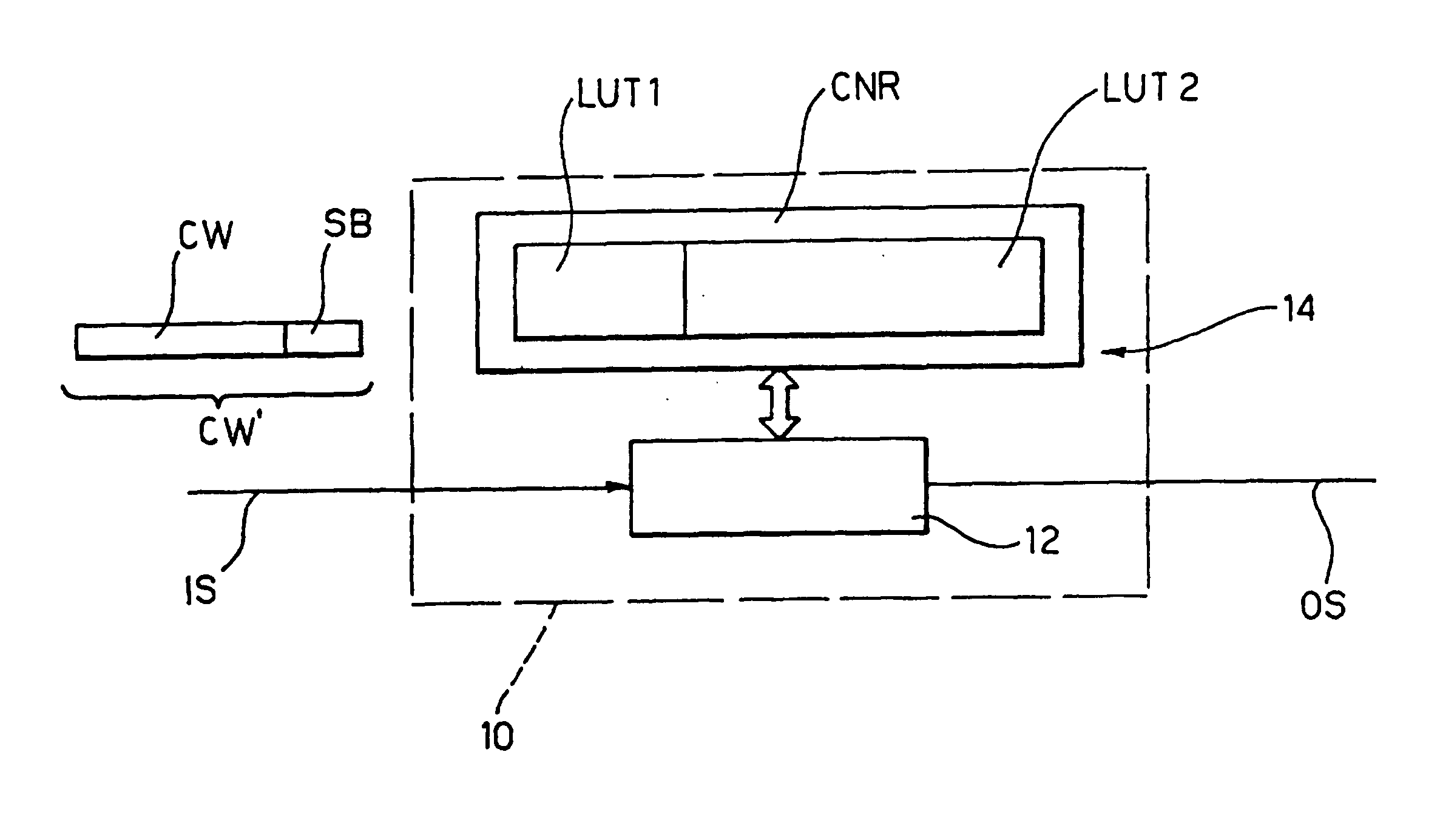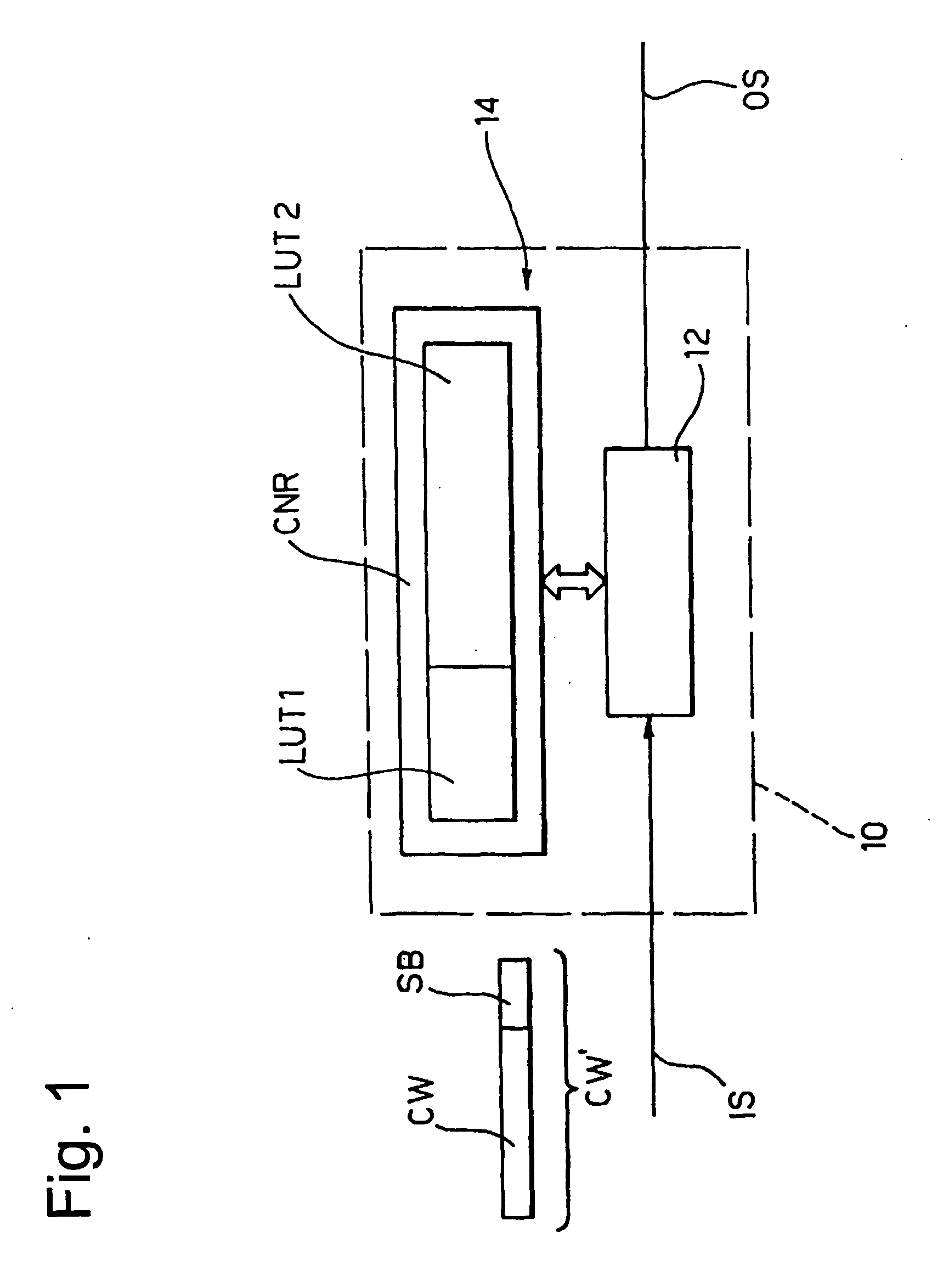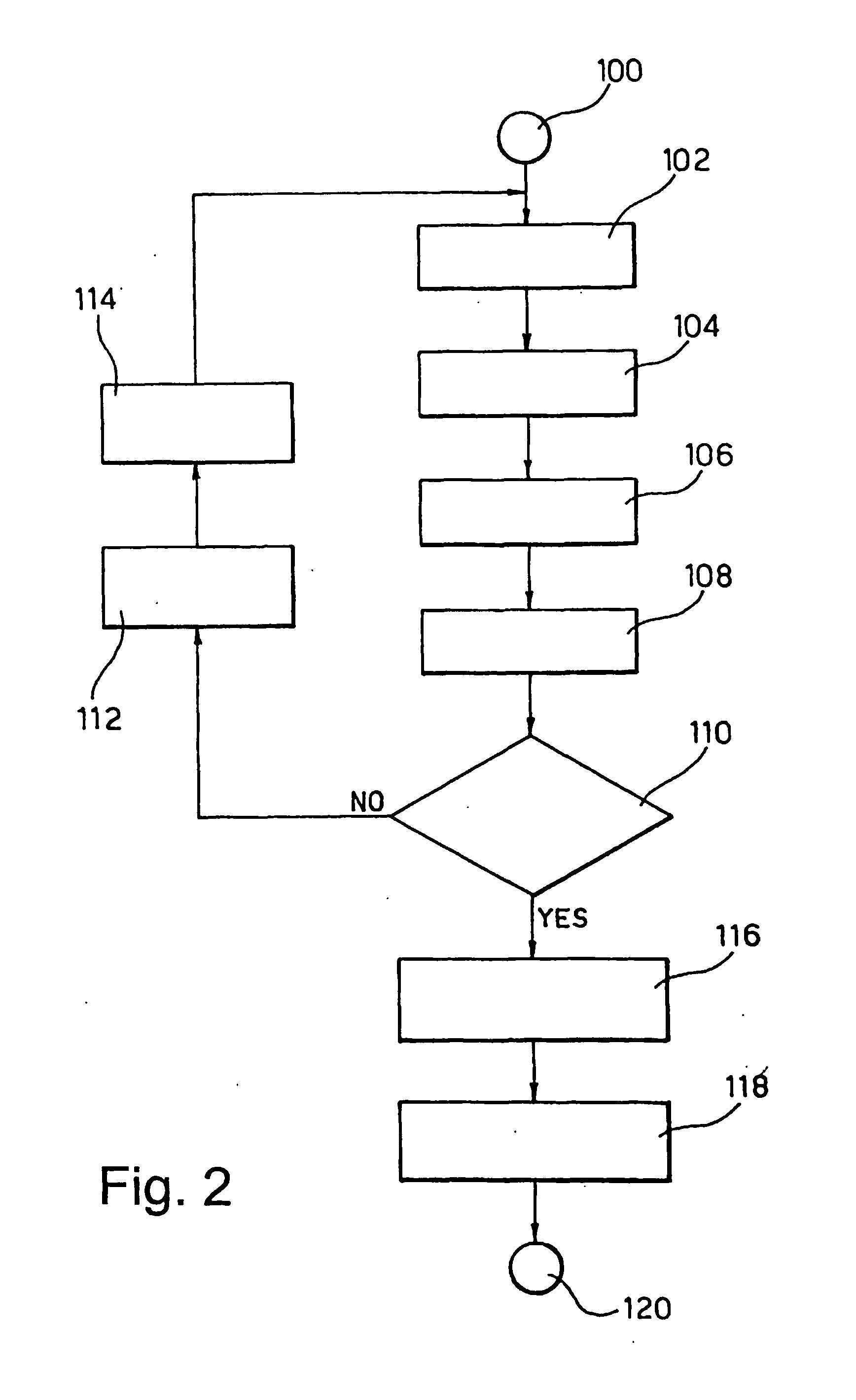Method and system for decoding variable length encoded signals, computer program product therefor
a variable length encoded and encoded technology, applied in the field of data compression, can solve the problems of linear cost in terms of time of huffman decoding, waste of memory space, and long search procedure for locating
- Summary
- Abstract
- Description
- Claims
- Application Information
AI Technical Summary
Benefits of technology
Problems solved by technology
Method used
Image
Examples
Embodiment Construction
[0058] The arrangement disclosed herein is essentially in the form of a decoder 10 adapted to receive an input signal IS comprised of a variable-length-encoded (e.g. Huffman) digital data stream. As a result of the decoding process carried out therein, the decoder 10 produces an output, decoded data stream OS.
[0059] The decoder 10 may be included as a building block in a more complex processing system (not shown) such as a decoder for e.g. MPEG audio and video signals: the general layout and principles of operation of such a audio / video decoder are well known in the art, thus making it unnecessary to provide a more detailed description herein.
[0060] Similarly known, and thus not requiring to be described here in detail, are the criteria adopted for producing the encoded input signal IS. Essentially, VLE algorithms use a table of the frequencies of occurrence of each possible input symbol to build up an optimal way of representing each symbol as a variable-length binary string, cal...
PUM
 Login to View More
Login to View More Abstract
Description
Claims
Application Information
 Login to View More
Login to View More - R&D
- Intellectual Property
- Life Sciences
- Materials
- Tech Scout
- Unparalleled Data Quality
- Higher Quality Content
- 60% Fewer Hallucinations
Browse by: Latest US Patents, China's latest patents, Technical Efficacy Thesaurus, Application Domain, Technology Topic, Popular Technical Reports.
© 2025 PatSnap. All rights reserved.Legal|Privacy policy|Modern Slavery Act Transparency Statement|Sitemap|About US| Contact US: help@patsnap.com



